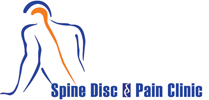Neck Pain / Cervical Spondilytis
Neck Pain / Cervical Spondilytis
CERVICAL SPONDYLITIS
Neck pain is one of the most common problems that one encounters in day to day life. Cervical Spondylosis is more frequently seen in women than men. Most people will experience neck pain at some point in their life.
With the increase in number of professionals who sit for hours together doing desk work or sitting for hours in front of the computer and call center jobs which requires continuous sitting in one posture the number of people suffering with cervical spondylosis is on the rise. Cervical spondylosis is a ‘wear and tear’ of the vertebrae and discs in the neck and is the most common cause.
It is very important to attempt to ascertain the facts that can cause it. Cervical spondylosis may be caused by one or more of several complaints. A very common mistake is to perceive the cause of illness as a singular factor. Neck pain can be caused by an injury, muscular problem or by trapped nerve between vertebrae. Inappropriate working or sleeping posture can also be the cause. Mobility of the spine is dependent on several small joints, the derangement of the functioning of one of which, can cause neck pain and reduced movements.
Symptoms of cervical spondylosis?
Symptoms can vary from mild to severe. You may have a flare up of symptoms if you over-use your neck, or if you sprain a neck muscle or ligament. Symptoms include:
- Pain in the neck. This may spread to the base of the skull and shoulders. Movement of the neck may make the pain worse. The pain sometimes spreads down an arm to a hand or fingers. This is caused by irritation of a nerve which goes to the arm from the spinal cord in the neck. The pain tends to wax and wane with flare-ups from time to time. However, some people develop chronic (persistent) pain.
- Some neck stiffness, particularly after a night’s rest.
- Headaches from time to time. The headaches often start at the back of the head just above the neck and travel over the top to the forehead.
- Numbness, pins and needles or weakness may occur in part of the arm or hand. Tell a doctor if these symptoms occur as they may indicate a problem with a ‘trapped nerve’.







